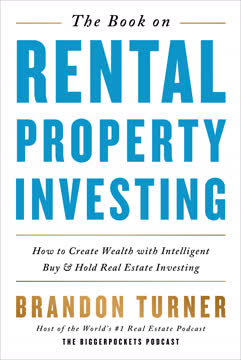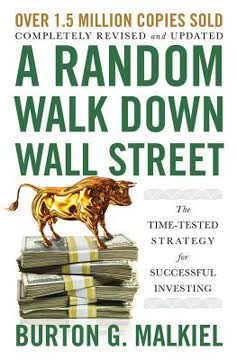Key Takeaways
1. Master the Four Ways to Make Money in Real Estate
Virtually all of the measures and concepts that we will discuss in this book connect to four critical elements that, to a greater or lesser degree, inhabit every income-property investment.
Cash Flow is the lifeblood of real estate investing. It represents the money left over after all expenses and mortgage payments are made. Positive cash flow provides ongoing income and financial stability.
Appreciation occurs when a property increases in value over time. This can be due to market conditions, improvements made to the property, or changes in the surrounding area. Appreciation can lead to significant profits when the property is sold.
Loan Amortization works in your favor as tenants essentially pay down your mortgage. Over time, this increases your equity in the property without additional out-of-pocket expenses.
Tax Benefits can significantly boost your overall returns. These may include:
- Depreciation deductions
- Mortgage interest deductions
- Property tax deductions
- 1031 exchanges to defer capital gains taxes
2. Understand and Calculate Key Financial Measures
Like all types of investing, real estate requires that you develop a proficiency with some basic measurements—rates of return, cash flows, and estimates of value, to name a few.
Net Operating Income (NOI) is a crucial metric in real estate investing. It represents the income generated by a property after deducting all operating expenses, but before considering debt service and income taxes.
Key financial measures to master:
- Capitalization Rate (Cap Rate)
- Cash-on-Cash Return
- Internal Rate of Return (IRR)
- Gross Rent Multiplier (GRM)
- Debt Coverage Ratio (DCR)
Understanding these metrics allows investors to:
- Compare different investment opportunities
- Assess a property's financial performance
- Determine appropriate purchase prices
- Forecast potential returns
3. Analyze Property Income and Expenses Effectively
The APOD is not just a source of answers about an investment property, but rather the source of the most important questions.
Annual Property Operating Data (APOD) form is an essential tool for analyzing a property's financial performance. It provides a snapshot of a property's income and expenses over a one-year period.
Key components of an APOD:
- Gross Scheduled Income
- Vacancy and Credit Loss
- Effective Gross Income
- Operating Expenses (broken down by category)
- Net Operating Income
When analyzing expenses:
- Compare expense ratios to industry standards
- Look for unusual or out-of-line expenses
- Consider the property's age and condition
- Factor in potential increases in expenses over time
4. Leverage the Time Value of Money in Real Estate Investing
Present worth implies that there is a time value to money that you must take into account.
Discounted Cash Flow Analysis is a powerful tool that takes into account the time value of money. It allows investors to compare investments with different cash flow patterns over time.
Key concepts in time value of money:
- Present Value (PV)
- Future Value (FV)
- Net Present Value (NPV)
- Internal Rate of Return (IRR)
Applications in real estate:
- Evaluating lease terms
- Comparing different financing options
- Assessing the impact of renovations or improvements
- Determining optimal holding periods for properties
5. Estimate Property Value and Return on Investment
Value is determined by the numbers. The owner of the Yankees may admire a batter's graceful swing, but he pays for that player's batting average.
Income Capitalization Approach is a primary method for valuing income-producing properties. It involves dividing the property's Net Operating Income by the appropriate capitalization rate.
Factors influencing property value:
- Local market conditions
- Property condition and age
- Tenant quality and lease terms
- Potential for value-add improvements
Return on Investment (ROI) measures:
- Cash-on-Cash Return
- Total Return (including appreciation)
- Equity Multiple
- Internal Rate of Return (IRR)
Consider multiple valuation methods and ROI measures to get a comprehensive view of a property's investment potential.
6. Navigate Financing and Mortgage Calculations
Ever since Neanderthal Man first sublet the summer cave, income-property owners have been devising methods of measuring the success of their investments.
Leverage is a powerful tool in real estate investing, allowing investors to control larger properties with less capital. However, it also increases risk and can magnify losses.
Key mortgage calculations:
- Monthly payment
- Loan amortization schedule
- Balloon payment amounts
- Loan-to-Value ratio (LTV)
- Debt Coverage Ratio (DCR)
Financing considerations:
- Fixed vs. variable interest rates
- Loan terms and amortization periods
- Prepayment penalties
- Recourse vs. non-recourse loans
- Commercial vs. residential lending standards
7. Optimize Tax Strategies for Real Estate Investments
Taxable income in regard to real estate, like taxable income in the rest of your life, is whatever the tax code says it is.
Depreciation is a significant tax benefit for real estate investors. It allows you to deduct a portion of the property's value each year as a non-cash expense, potentially reducing your taxable income.
Key tax strategies:
- Cost segregation studies
- 1031 exchanges
- Self-directed IRAs for real estate investing
- Pass-through deductions for qualified business income
Tax considerations:
- Passive activity loss limitations
- At-risk rules
- Capital gains vs. ordinary income treatment
- State and local tax implications
Consult with a qualified tax professional to maximize tax benefits and ensure compliance with current tax laws.
Last updated:
FAQ
What's What Every Real Estate Investor Needs to Know about Cash Flow about?
- Focus on Financial Measures: The book emphasizes understanding cash flow and 36 other key financial measures essential for real estate investing.
- Investment Strategies: It discusses the four primary ways to make money in real estate: cash flow, appreciation, loan amortization, and tax shelter.
- Practical Calculations: Provides practical calculations and examples, making complex financial concepts accessible for investors at all levels.
Why should I read What Every Real Estate Investor Needs to Know about Cash Flow?
- Essential for Success: Understanding cash flow and financial metrics is vital for success in real estate investing.
- Real-World Applications: Frank Gallinelli shares insights from over 30 years of experience, helping readers apply concepts directly to their strategies.
- Comprehensive Resource: Serves as a comprehensive guide for both novice and experienced investors, offering tools and templates to simplify calculations.
What are the key takeaways of What Every Real Estate Investor Needs to Know about Cash Flow?
- Understanding Cash Flow: Emphasizes the importance of cash flow as a primary measure of a property's financial health.
- Four Ways to Profit: Investors can profit through cash flow, appreciation, loan amortization, and tax shelter.
- Financial Calculations: Covers essential calculations like net operating income (NOI), cash-on-cash return, and internal rate of return (IRR).
What is cash flow, and why is it important in real estate investing according to Frank Gallinelli?
- Definition of Cash Flow: Refers to the net amount of cash being transferred into and out of a property.
- Indicator of Investment Health: Positive cash flow indicates a property generates more income than expenses, making it viable.
- Decision-Making Tool: Helps investors make informed decisions about buying, holding, or selling properties.
How do I calculate net operating income (NOI) as per What Every Real Estate Investor Needs to Know about Cash Flow?
- Formula for NOI: Calculated by subtracting operating expenses from gross operating income.
- Components of Gross Operating Income: Includes all rental income and other income generated by the property, minus vacancy and credit loss.
- Exclusions from NOI: Does not include mortgage payments, depreciation, or income taxes.
What is the significance of the capitalization rate (cap rate) in What Every Real Estate Investor Needs to Know about Cash Flow?
- Definition of Cap Rate: Ratio of a property's net operating income (NOI) to its current market value.
- Valuation Tool: Helps investors determine the value of a property based on its income-generating potential.
- Market Comparison: Used to compare similar properties in the market.
How does the time value of money affect real estate investments according to Frank Gallinelli?
- Concept of Time Value: States that a dollar today is worth more than a dollar in the future due to its potential earning capacity.
- Discounting Future Cash Flows: Investors must discount future cash flows to determine their present value.
- Impact on Investment Decisions: Allows investors to make better decisions regarding when to buy, hold, or sell properties.
What is the internal rate of return (IRR), and how is it calculated in What Every Real Estate Investor Needs to Know about Cash Flow?
- Definition of IRR: The discount rate that makes the net present value (NPV) of all cash flows from an investment equal to zero.
- Calculation Method: Can be calculated using financial calculators or spreadsheet software like Excel.
- Investment Comparison: A higher IRR indicates a more attractive investment.
What is the Gross Rent Multiplier (GRM) in What Every Real Estate Investor Needs to Know about Cash Flow?
- Simple Valuation Tool: GRM is a straightforward method to estimate the market value of an income property based on its gross income.
- Calculation: Calculated by dividing the property’s market value by its gross scheduled income.
- Limitations: Does not account for the time value of money or operating expenses.
How do I determine the Cash-on-Cash Return (CoC) from What Every Real Estate Investor Needs to Know about Cash Flow?
- CoC Definition: Measures the annual cash flow generated by an investment relative to the amount of cash invested.
- Calculation: Formula is: CoC = Annual Cash Flow / Cash Invested.
- Investment Comparison: Useful for comparing the profitability of different investments.
What is the Debt Coverage Ratio (DCR) in What Every Real Estate Investor Needs to Know about Cash Flow?
- Definition of DCR: Ratio of a property’s Net Operating Income (NOI) to its annual debt service.
- Importance for Lenders: Lenders typically look for a DCR greater than 1.20.
- Calculation: Formula is: DCR = NOI / Annual Debt Service.
What are the best quotes from What Every Real Estate Investor Needs to Know about Cash Flow and what do they mean?
- "In real estate, there is a right way and a wrong way to do most things.": Emphasizes the importance of knowledge and preparation.
- "You’re really buying the income stream.": Focus should be on the property's ability to generate income.
- "If it’s not worth selling, then it’s not worth buying.": Consider the resale value of a property before purchasing.
Review Summary
What Every Real Estate Investor Needs to Know about Cash Flow... And 36 Other Key Financial Measures is highly praised for its comprehensive coverage of real estate investment calculations and metrics. Readers appreciate its practical approach, thorough explanations, and valuable insights. The book is considered an essential reference for both novice and experienced investors. While some find it technical and challenging, many value its in-depth analysis and real-world examples. The book's focus on financial measures and investment evaluation tools makes it a go-to resource for those serious about real estate investing.
Similar Books










Download PDF
Download EPUB
.epub digital book format is ideal for reading ebooks on phones, tablets, and e-readers.




